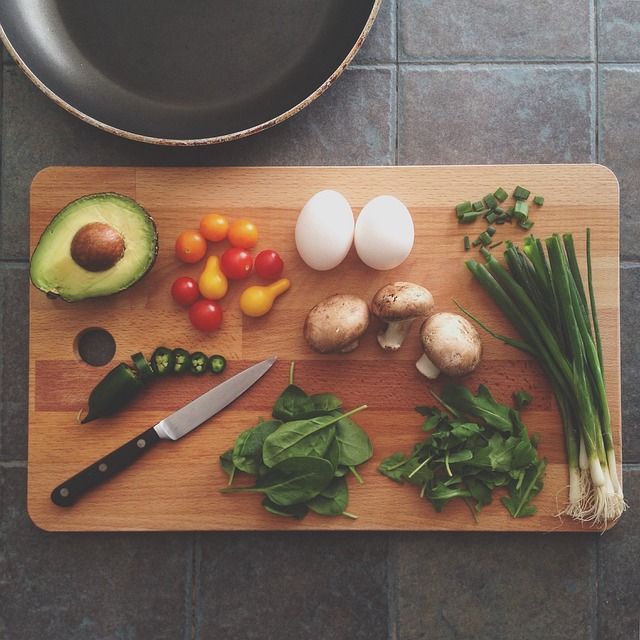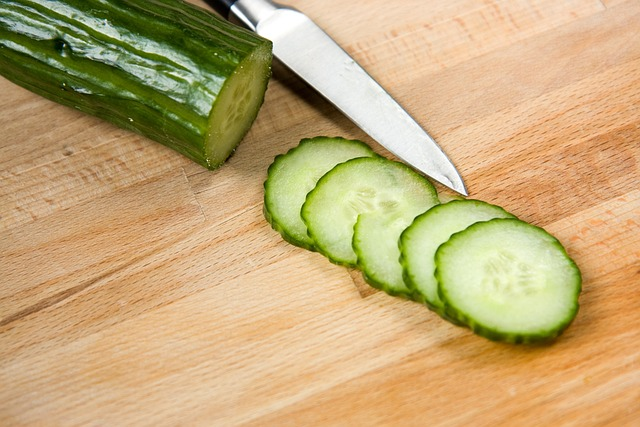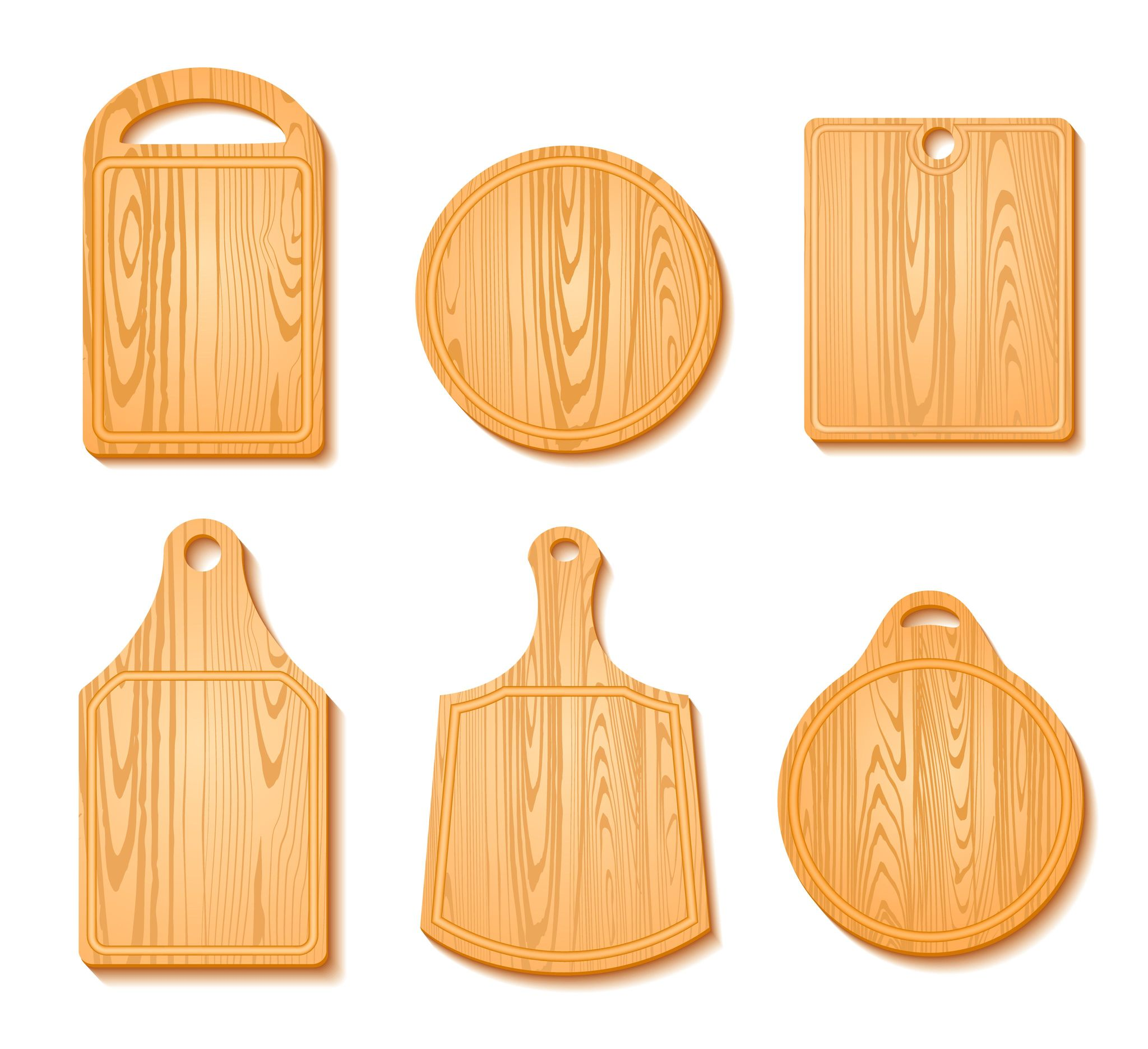Vegan Globetrotter is supported by our audience. When you purchase through one of our links, we may earn a small affiliate commission. As an Amazon Associate I earn from qualifying purchases. Your cost is not affected.
==================
Welcome to the ultimate Cutting Board Guide! In this article, we’ll delve into the fascinating world of cutting boards, covering the types and cutting sizes and shapes of various types of cutting boards.
Whether you’re a chef or a home cook looking to level up your kitchen game, this article will help you with the knowledge to make the best choice for your culinary needs. We’ll help you find the perfect cutting board that suits your style and enhances your cooking experience. Prepare to slice, dice, and chop like a pro with the right cutting board by your side!
Cutting Board Materials
Understanding its distinct advantages is the most crucial part of selecting a cutting board. Some materials perform more specific functions than the rest. I know that knowing the needs of your operation helps you choose a cutting board. Other factors include costs, dimensions, cleaning, and maintenance life expectancy.
Different Types of Cutting Boards
Alright, let’s talk cutting boards! There are many types, like wooden, plastic, and even glass cutting boards. Let’s remember the reliable butcher blocks, originally designed to handle various cutting tasks precisely and now perfect for effortlessly handling all your plant-based ingredients like a champ! These boards have pros and cons, making them better suited for specific kitchen tasks. So, let’s dive in and find out which cutting board will be your kitchen’s new best friend!
Wooden Board

Wooden cutting boards have been a trusted kitchen tool since the days of chopping wood for kindling. Renowned for their versatility, durability, and knife-friendly nature, rigid boards have become a staple in culinary spaces worldwide.
Knife-Friendly: The wooden cutting board is naturally forgiving, making it gentle on knife blades and helping maintain their sharpness for extended periods.
Versatility: Wooden cutting boards are incredibly versatile and well-suited for a wide range of kitchen tasks, such as chopping an array of vegetables and fruits or even elegantly carving plant-based meats, making them an essential tool for every vegan kitchen.
Durability: When properly cared for, a high-quality wooden cutting board can last many years, making it a long-term investment for your kitchen.
Resilience: Minor scratches and cuts on the surface of a wood cutting board tend to heal over time, extending its lifespan.
Maintenance: Wooden boards require regular maintenance, such as oiling and drying correctly after use, to prevent the growth of bacteria and avoid warping.
Absorbs Odors: Wood can absorb the odors of certain foods, which might affect the flavors of subsequent items prepared on the board.
Porous Nature: Wood has a more porous surface than other materials, making it more prone to retaining moisture and stains if not properly dried and cleaned.
Susceptible to Cracks: Exposing wooden boards to extreme temperature changes or excessive moisture can cause them to crack or split over time.
Understanding the Differences: End Grain, Face Grain, and Edge Grain Cutting Boards
Choosing the perfect wooden board goes beyond aesthetics. The type of wood matters, whether end grain, face grain, or edge grain, as it significantly impacts the board’s durability and how well it treats kitchen knives. Moreover, factors like thickness and hardness come into play, offering crucial considerations when selecting the ideal wooden board.
End Grain

End grain boards showcase the tree’s rings and are gentle on knives, but they can be more susceptible to moisture and heat. They are also thicker and pricier.
Face Grain
Face grain boards display wide boards from the tree trunk, are affordable but require more maintenance and may dull knives over time.
Edge Grain
Edge grain boards use long, thin strips of budget-friendly wood that may need more frequent maintenance to preserve their durability and knife-friendliness. Consider these factors when selecting the ideal wooden cutting board for your kitchen needs.
Plastic Cutting Board

Plastic cutting boards come in various colors, sizes, and shapes, and they are popular due to their easy maintenance and affordability. While they may not be passed down through generations, they can last for a few years, which is okay considering their low cost.
One thing to remember with plastic cutting boards is that once you cut on them, the knife marks stay there permanently. The more cuts and nicks they accumulate, the more potential hiding spots for bacteria. That’s why replacing your plastic cutting board is essential when it shows signs of wear and tear.
Various boards can be made from plastic that fits any kitchen layout. Unlike wood, which is very heavy for transport, it is relatively lightweight.
Easy to Clean: They can be easily cleaned in the dishwasher or with soap and water, ensuring efficient sanitation.
Affordable: Plastic cutting boards are generally more budget-friendly than other materials, making them accessible.
Lightweight and Portable: Their lightweight nature makes them easy to carry and move around the kitchen.
Color-Coded Options: Plastic cutting boards are often available in various colors, allowing users to designate specific boards for different types of food, reducing cross-contamination risks.
Knife Wear: Plastic boards can cause more wear and tear on knives due to their rigid surface, leading to dull blades over time.
Stains and Odors: They can sometimes retain stains and odors, mainly when used to cut strongly flavored or colorful ingredients.
Vulnerable to Cuts and Grooves: Deep cuts or grooves in the plastic surface can harbor bacteria, even with regular cleaning.
Environmental Impact: Many plastic cutting boards are not biodegradable, contributing to environmental concerns when disposed of improperly.
Butcher Block

While butcher blocks may be traditionally associated with professional butchers, here’s the exciting news – these versatile cutting boards offer unique benefits that everyone can enjoy, regardless of whether you chop meat or not in your kitchen. They’re incredibly durable! Butcher blocks are super versatile, making them perfect for cutting and prepping ingredients and even using them as stylish serving trays or serving trays. So, whether you’re a pro chef or a home cook, you can enjoy the benefits of a butcher block in your kitchen!
Butcher Block vs. Regular Cutting Board
When comparing a butcher block to a regular cutting board, several key differences stand out in their purpose, wood grain, cleaning, size, and weight. Butcher blocks are designed for heavy-duty tasks, making them excellent for preparing significant portions of vegetables and fruits and handling multiple plant-based ingredients for your delicious vegan dishes. They provide ample space to work with, making them perfect for professional chefs or when cooking for a crowd. On the other hand, a regular cutting board is better suited for smaller tasks such as chopping veggies or slicing fruits.
When it comes to cleaning, regular cutting boards have an advantage due to their smaller size, making them easier to handle and clean. Given their larger size and weight, butcher blocks can be more challenging to maneuver and clean effectively. Wood grain is another crucial distinction. Most butcher block feature end-grain construction, where the grain’s ends face upwards. This end-grain design is gentle on knives and is preferred by many chefs. In contrast, cutting boards can come in either end-grain or side-grain designs, offering different benefits depending on the chef’s preferences and cutting style.
Cutting Board Sizes

With a wide variety of cutting board sizes and shapes, the culinary world embraces a versatile and practical approach to meal preparation. Each size and shape offers unique advantages.
Small Cutting Board Size
Smaller boards offer several advantages and are practical in terms of storage space. It’s a great tool to chop in a small kitchen. If one has small chop boards at home, they are usually used for cutting fruit for cocktails or just for snacking. Smaller cut boards have these widths: 4×6 or 10cm, or 5×7 inch or 13×18 centimeter. A larger one offers more flexibility: 6 in 9 inches or 16 in 24 centimeters and 10 in 8.25 in 10.
Medium Cutting Board Size
These medium-size cutting boards are the most commonly used household cutting boards. Because they are small, they are just enough to assemble meals and keep medium cutting boards accessible. Opting for a large wooden board can enhance your vegetable-cutting experience, while smaller plastic boards are practical for preparing plant-based meats and other vegan ingredients. Medium-size cut boards are available as 10x14in or 25×36 centimeters, 12x18in or 30×46 centimeters, and 15x20in.
Large Cutting Board Size
If your family loves to incorporate fun shapes on the table or kitchen utensils, looking at bigger cutting boards in your kitchen can give you additional options in deciding which one to use. Larger boards can also allow you to cut a large variety of meals simultaneously or as a dish to serve as dipping sauces or appetizers during your next dinner party. Many larger units have commercial uses, so bigger units will make an incredible choice – especially when trying to find the most appropriate restaurant. Generally, bigger cutting boards are between 7×23 inches and 18×58 inches.
Small Cutting Board vs. Big Cutting Board
The differences between smaller and large cutting boards depend on the cutting surface. Small cutting boards are essential because their size and functionality are important. It can fit in the cabinet easily. You can cut small and complex ingredients using these cutting boards. Many homes are used to prepare single-serving meals like fruit and vegetables on small plates. Below are diverse size cut boards’ pros and cons.
Unveiling the Shapes: Cutting Board Varieties

Rectangular Cutting Boards
The classic and most common shape is the rectangular shape, rectangular boards suitable for a wide range of cutting tasks. Their straight edges allow for efficient use of space and easy storage. Rectangular cutting boards fit well in most kitchen layouts and provide a traditional look.
Circular Cutting Boards
They are excellent for communal cooking or when counter space is limited, adding an elegant touch to your kitchen decor. Circular boards boast a unique and visually appealing shape, offering 360-degree access to the cutting surface.
Square Cutting Boards
Square boards offer a versatile shape that combines straight edges with easy handling. They provide a good balance of cutting space and practicality, making them suitable for various kitchen tasks.
Irregular Shaped Cutting Boards
These boards come in creative and artistic designs, serving as real eye-catchers in your kitchen. Specific irregular shapes offer functionality, such as grooves to collect natural juices from fruits and veggies or innovative strategies tailored to meet vegan kitchen needs. They add a touch of personality to your culinary space.
Carve Your Culinary Masterpiece: The Cutting Board Journey Awaits!
Alright, let’s wrap it up! The Cutting Board Guide takes you on a journey through all the different cutting board options out there. It’s like your trusty GPS, helping you navigate the culinary world and make smart choices based on how you cook, the size of your kitchen, and what you like.
With this knowledge, you can confidently pick the perfect cutting board that matches your style, elevates your cooking game, and handles all your kitchen tasks like a pro! Whether you’re a seasoned chef or a home cook, there’s a cutting board waiting for you, ready to be your trusty sidekick in the kitchen.
FAQs
What is the standard size of the cutting board?
The standard size of a cutting board can vary, but a common and popular size for a standard cutting board is around 12 inches by 18 inches (30 cm by 46 cm). This size provides a good balance between being large enough to accommodate various cutting tasks yet still manageable to fit in most kitchen spaces and storage areas.
How do you know what size of cutting board to get?
Choosing the right cutting board size involves considering your cooking habits, kitchen space, and the tasks you frequently perform in the kitchen.
What shapes are best for cutting boards?
The shape of a cutting board ultimately depends on your preferences and specific culinary needs. Each profile offers unique advantages, and the best one for you will depend on how you plan to use the cutting board and kitchen space. Here are some popular cutting board shapes and their benefits.
🌱 Cutting Board Guide: Explore the Vegan Lifestyle with Us! 🍉🌽
Discover the world of cutting boards and embrace the vegan lifestyle! 🔪
👉 Engaging Content: Follow us on Facebook, Instagram, Pinterest, and Twitter for exciting posts about fruits, veggies, and the vibrant vegan world, including cutting board tips and hacks!
👉 Product Reviews: Check out honest reviews on plant-based products and find cutting boards perfect for your kitchen.
👉 Connect with a Community: Join our passionate community of vegan enthusiasts, share your cutting-board experiences, and learn from like-minded individuals who love cooking with fruits and veggies!
📌 Find Us on Social Media:
🔹 Facebook: VeganGlobetrotter
🔹 Instagram: _veganglobetrotter
🔹 Pinterest: theveganglobetrotter
🔹 Twitter: VeganGlobetrot
🌍 Let’s embark on a vegan journey with cutting-board insights and a celebration of the vibrant world of vegan living! 🌱🌏



Don't miss out
when new recipes and information are added!
Join our newsletter for free recipes,
healthy living inspiration, and special offers
You have Successfully Subscribed!